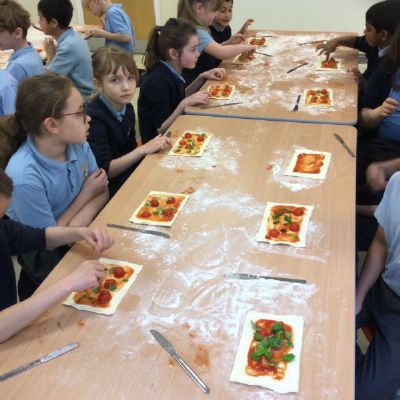Design and Technology
Design Technology at Nash Mills!
Led by Mr Maher
"Design is a funny word. Some people think design means how it looks. But of course, if you look deeper, it's really how it works."
Steve Jobs
"Technology makes possibilities. Design makes solutions."
John Maeda

Design and Technology at our school prepares children to deal with the rapidly changing world. It encourages children to become independent, creative problem solvers, able to work individually and part of a team. It enables them to identify needs and opportunities and to respond to them by developing a range of ideas and by making products and systems. Through the study of Design and Technology, they combine practical skills with an understanding of aesthetic, social and environmental issues, as well as functions and industry.
All of our learners will have:
- The opportunity to develop excellent skills across a range of areas and using a wide variety of resources and media.
- The ability to evaluate their own work and that made by others.
- A practical approach to design, through a clear process of planning and evaluating. They will be able to discuss ideas and challenge others.
- Spirituality. A clear sense of how art and other media makes them feel and how these things can affect others.
- The opportunity to record from first-hand experiences and imagination.
- A critical awareness of the roles and purposes of art and design in different times and cultures.
- Knowledge about great craft makers and designers and understand the historical and cultural development of art forms.
How we teach Design and Technology
Design and Technology is taught as a block of lessons focusing on one key project each term. The whole of Key Stage 1 and 2 deliver the same theme at the same time, which enables us to see clear progression of skills across the school as well as sharing best practice and subject knowledge amongst staff.
For Design and Technology, we have adopted the Kapow scheme of work, which provides projects in Textiles, Food and Structures, which are taught one each term. Pupils also explore components of Design and Technology through the Computing, Science and other curriculum areas.
In Early Years, the curriculum is planned and sequenced to provide pupils with the opportunities to develop component skills which will prepare them for their learning once they reach Key Stage 1. More information about this can be seen on our Early Years curriculum planning. During the EYFS pupils explore and use a variety of media and materials through a combination of child initiated and adult directed activities. They have the opportunities to learn to:
- Use different media and materials to express their own ideas
- Use what they have learnt about media and materials in original ways, thinking about form, function and purpose
- Make plans and construct with a purpose in mind using a variety of resources
- Develop skills to use simple tools and techniques appropriately, effectively and safely
- Select appropriate resources for a product and adapt their work where necessary
- Cook and prepare food adhering to good health and hygiene routines
The key objectives of intent within the Design and Technology Curriculum, based on the National Curriculum 2014 guidance:
- Products are to be made for a purpose.
- Individuality should be ensured in children’s design and construction of products.
- Delivery of the two strands: Designing and Making and Cooking and Nutrition.
- More emphasis to be given on creating ‘innovative’ products in KS2.
- Teaching the importance of making on-going changes and improvements during making stages.
- Looking into seasonality of ingredients and how they are grown, caught or reared.
Sequencing of Content Each class takes part in a Design and Technology project at the same time and of the same area of learning, meaning that clear sequencing and progression can be seen across the school. The curriculum has been adopted through the Kapow scheme, meaning that clear progression is planned within each topic. |
Inclusion In addition to wider school processes, we recognise that in D&T, children will learn skills that require practice. These skills will be interwoven through the curriculum to allow practice to be relevant and developed. We also have some specialist equipment, such as electrical mixing equipment for pupils who are unable to do this physically, or electronic weighing scales which are used alongside analogue ones for those with visual difficulties. Each class has a set of games which are used to develop the cognitive and executive functioning skills of pupils, helping to find solutions and solve problems as they arise. |
How we add richness through discussion and cultural capital The Design and Technology curriculum is built around opportunities for pupils to discuss and challenge each other's ideas and opinions. This is demonstrated within the class books for DT, which record the feedback and ideas from class discussions. Further opportunities to develop cultural capital are planned alongside other subject areas, for example all pupils taking part in the KNEX challenge as part of science week. |
How this subject supports our Christian vision Pupils have the opportunity to explore some of the best ideas and consider what makes them so special within our world. Much of the project work is completed alongside others, gaining appreciation of the skills and talents of those around us as well as being able to practice the skill of disagreeing well when conflict arises! |
Food Unit
Curriculum Plan and Knowledge Organisers












